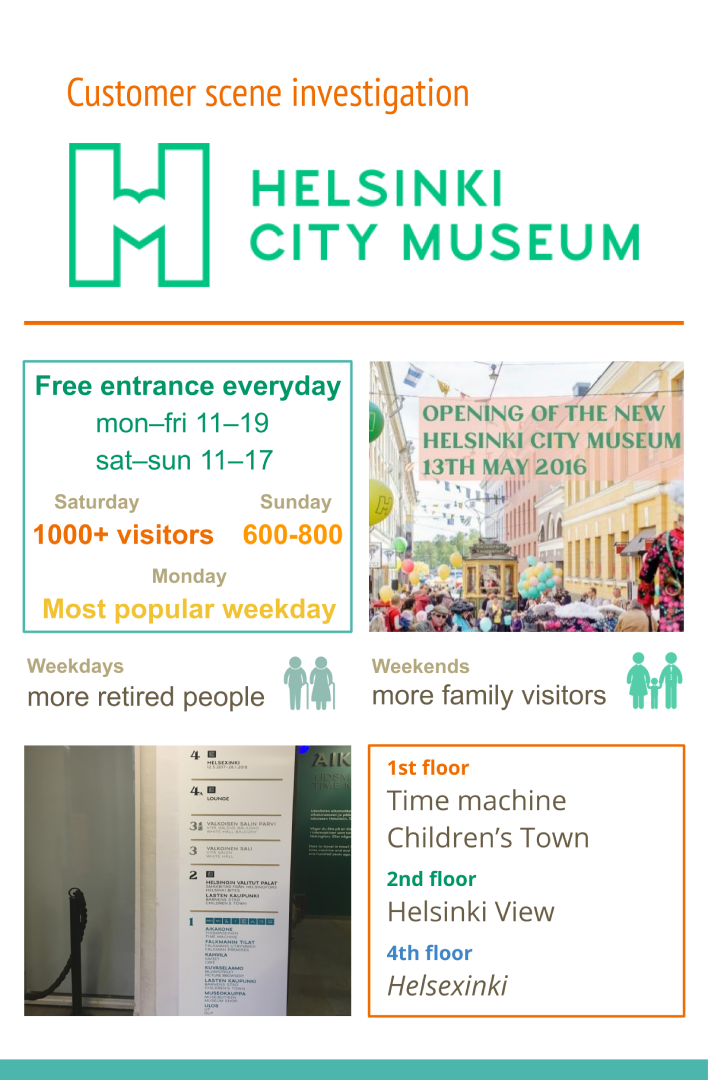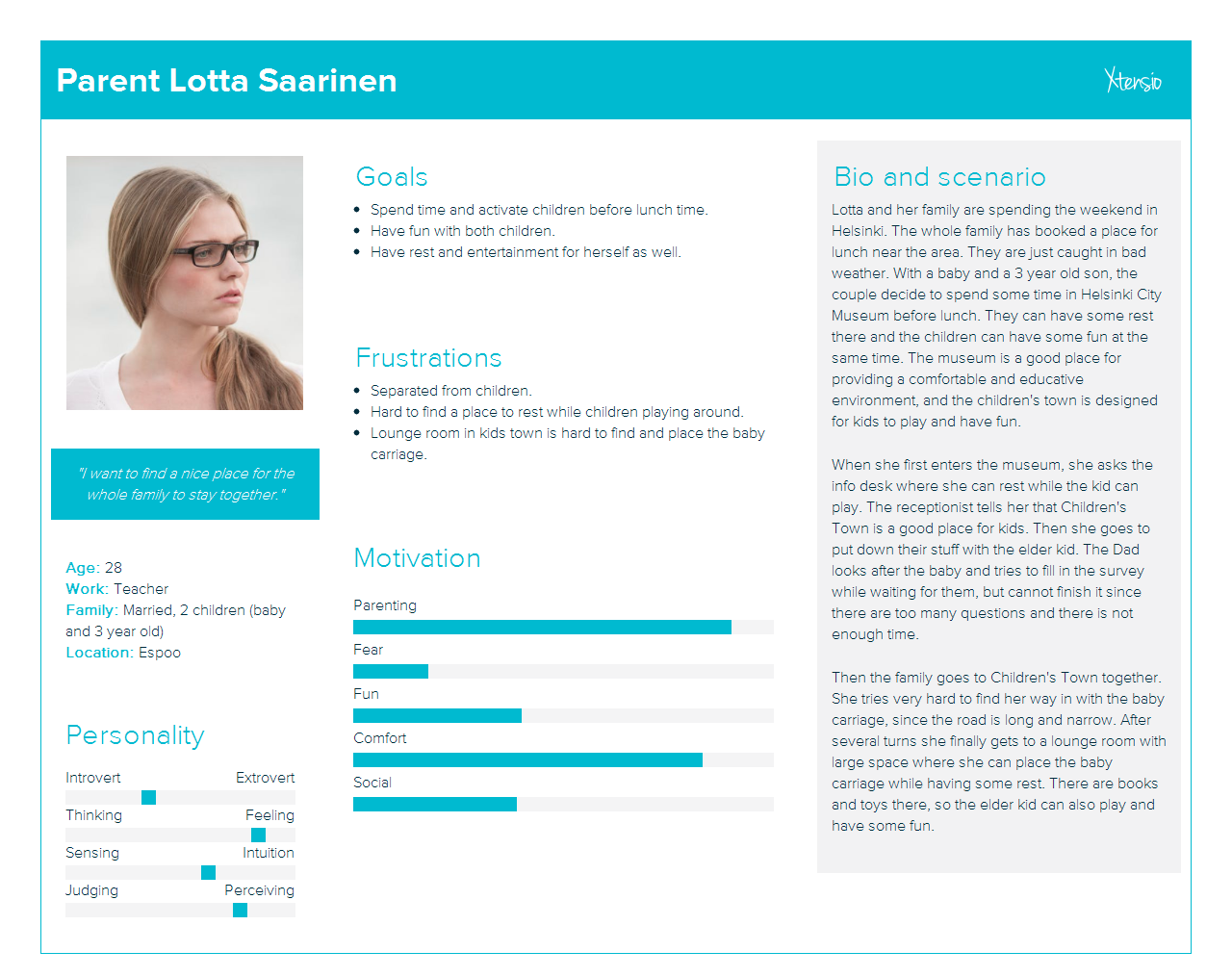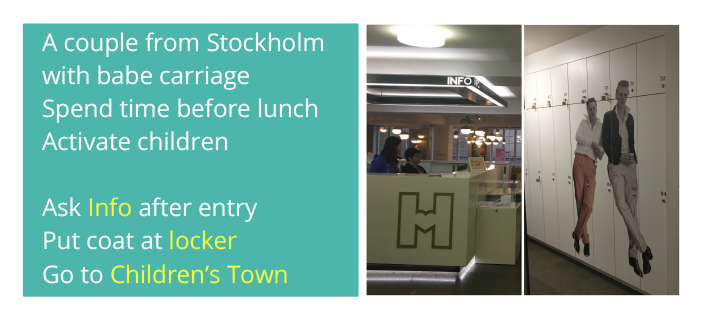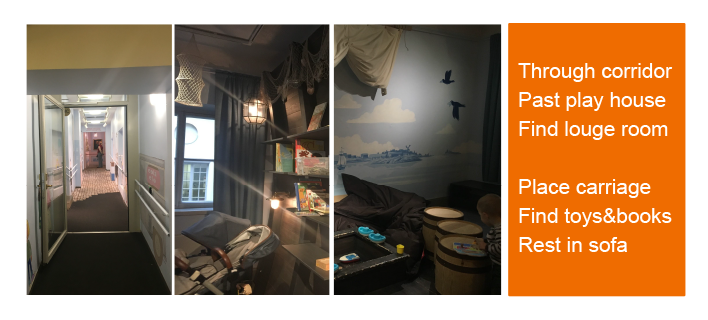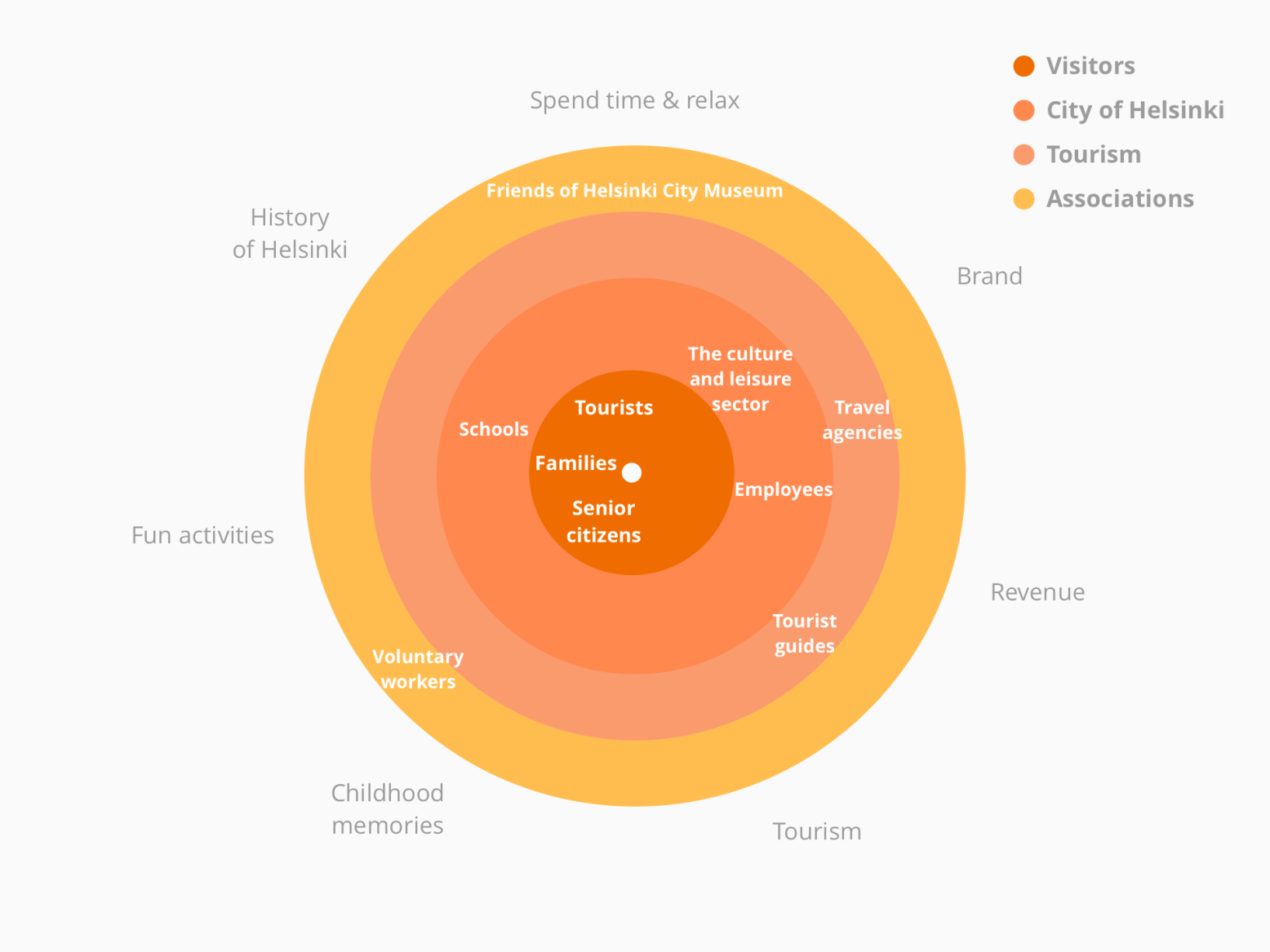The field study was conducted in two groups of two researchers. We mainly interviewed and observed museum visitors. We went to different floors and exhibitions and ask people’s opinions about their experience. I also tried to follow some visitors to go together with them and not intrude in their choice of where to go next.
Based on our research, we found the museum visitors can be categorized in three user groups: Tourists, Parents with Kids and Senior Citizens.
